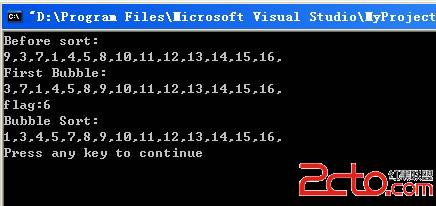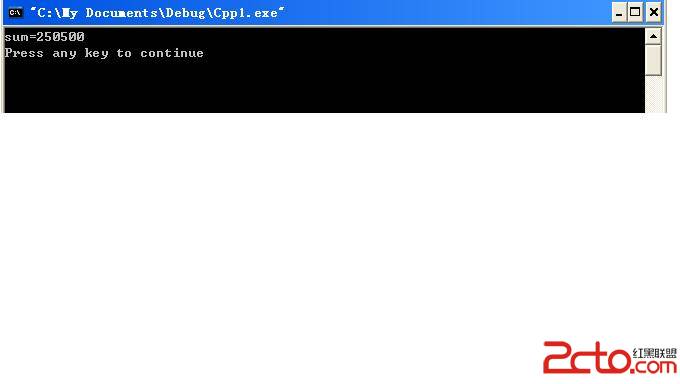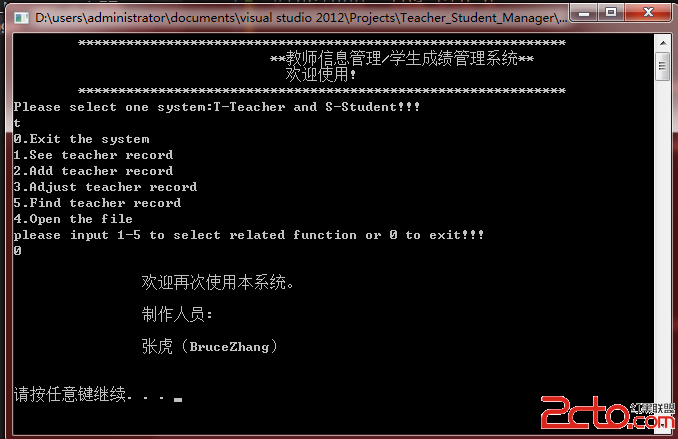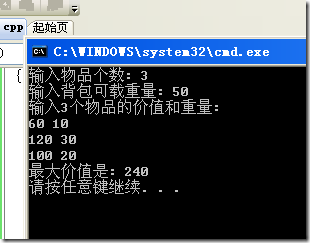poj 1430 Binary Stirling Numbers
第二类Stirling数是把包含n个元素的集合划分为正好k个非空子集的方法的数目。
递推公式为:
S(n,k) = 0(n<k||k=0),
S(n,n) = S(n,1) = 1,
S(n,k) = S(n-1,k-1) + kS(n-1,k).
下面这幅图是从易做图截出来的,有一个二进制斯特灵数与组合数的转化公式。而组合数模二的余数就很容易了。
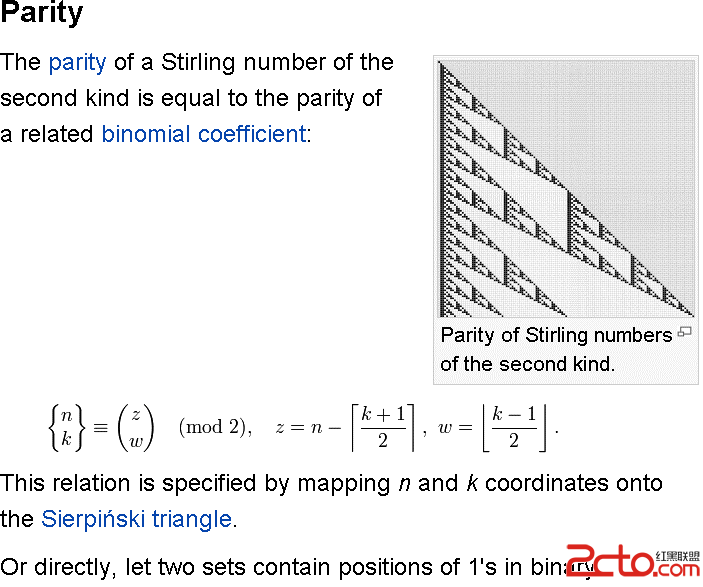
我们知道,组合数C(N,M)=N ! / M ! /(N-M)!,因而只需求得阶乘质因数分解式中二的重数即可解决问题。
而N !质因数分解后2的重数可用下式来计算之。
K=N/2+N/2^2+N/2^3+....
Description
The Stirling number of the second kind S(n, m) stands for the number of ways to partition a set of n things into m nonempty subsets. For example, there are seven ways to split a four-element set into two parts:
{1, 2, 3} U {4}, {1, 2, 4} U {3}, {1, 3, 4} U {2}, {2, 3, 4} U {1}
{1, 2} U {3, 4}, {1, 3} U {2, 4}, {1, 4} U {2, 3}.
There is a recurrence which allows to compute S(n, m) for all m and n.
S(0, 0) = 1; S(n, 0) = 0 for n > 0; S(0, m) = 0 for m > 0;
S(n, m) = m S(n - 1, m) + S(n - 1, m - 1), for n, m > 0.
Your task is much "easier". Given integers n and m satisfying 1 <= m <= n, compute the parity of S(n, m), i.e. S(n, m) mod 2.
Example
S(4, 2) mod 2 = 1.
Task
Write a program which for each data set:
reads two positive integers n and m,
computes S(n, m) mod 2,
writes the result.
Input
The first line of the input contains exactly one positive integer d equal to the number of data sets, 1 <= d <= 200. The data sets follow.
Line i + 1 contains the i-th data set - exactly two integers ni and mi separated by a single space, 1 <= mi <= ni <= 10^9.
Output
The output should consist of exactly d lines, one line for each data set. Line i, 1 <= i <= d, should contain 0 or 1, the value of S(ni, mi) mod 2.
Sample Input
1
4 2
Sample Output
1
代码:
[cpp]
#include<iostream>
using namespace std;
int f(int k)
{
int a=0;
while(k)
{
k=k/2;
a+=k;
}
return a;
}
int main()
{
int t,n,m,z,w1,w2;
scanf("%d",&t);
while(t--)
{
scanf("%d%d",&n,&m);
z=n-(m+2)/2;
w1=(m-1)/2;
w2=z-w1;
if(f(z)==f(w1)+f(w2))
printf("1%\n");
else printf("0%\n");
}
return 0;
}
补充:软件开发 , C++ ,